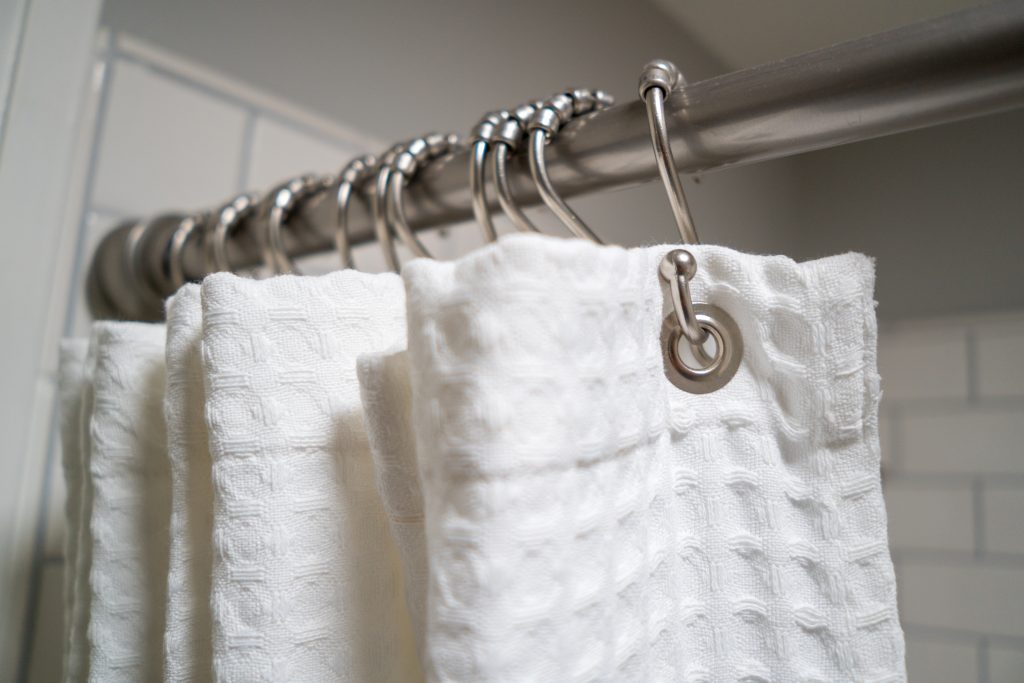You might think the bathroom is the simplest space in your house to decorate and maintain because there’s not much to it. Most people simply hang up a shower curtain and plastic liner and call it good, right?
There’s actually more to it than that! From finding the best shower curtain rods to guaranteeing they’re hung at the proper height for the space, small tweaks can make a big difference. Here are five mistakes you might be making with your shower curtain and how to correct them so your space stays functional, clean and mildew-free.
MORE: The Best Shower Curtains
Your Shower Curtain Rod Is Hung Incorrectly
In order for your bathroom to look right aesthetically, your shower curtain should be hung at the proper height. The average curtain should hang 75 to 77 inches off the ground. It’s worth noting if your shower curtain drags across the floor, the excess puddle of fabric will act as a breeding ground for mold and mildew, which will require more frequent cleaning.
You Never Wash Your Shower Curtain
If you don’t wash your shower curtain every few months, the bathroom’s damp environment can cause mold and mildew to grow on it. Look for water-repellant, machine-washable shower curtains with a built-in liner.
Your Shower Curtain Doesn’t Stay Up
If your shower curtain falls off the rod, something is not right with the hooks. The best shower curtain hooks will be able to handle the weight of the curtain and the liner easily. Most come in sets of 12.
Your Shower Rod Falls Down
Once a shower rod is installed, it should stay in place until you are ready to take it down. Tension rods offer a way to hang a shower curtain without leaving permanent marks on the wall. Make sure you have the adequate size to create the tension necessary to secure it firmly in place. Be sure to choose a rod that’s just a couple of inches longer than the space between the walls where you’ll attach it.
The best shower curtains won’t slip or rust and can handle at least 20-30 pounds of weight. Some even curve to offer you more elbow room.
You Don’t Have A Fabric Shower Curtain Liner
Fabric curtains can easily be tossed into the laundry and rehung after drying, which makes cleaning a breeze. Plastic liners take a bit more effort and need to be replaced every few months or so because they tend to show water stains and soap scum quickly.
MORE: The Best Shower Curtain Liners
Plastic liners need to be thoroughly cleaned at least once a month to stay ahead of mold growth. A DIY-custom cleaning solution or bleach can make the job easier. Or try a more eco-friendly option, like a fabric liner made of water-resistant polyester or nylon, which will give you more bang for your buck.
Do you think your bathroom could benefit from any of these minor adjustments?










